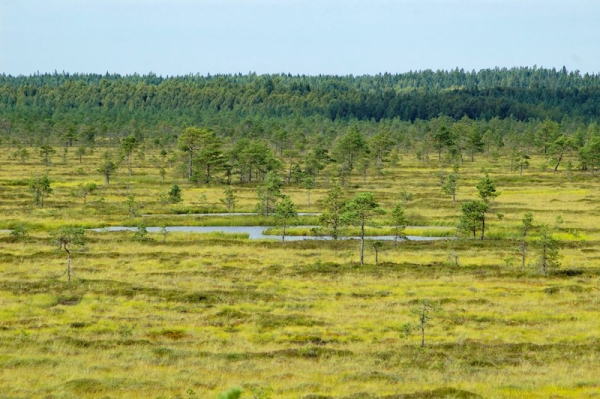Finland reports sharp decline in habitats and species

Kurjenrahka National Park is one of the largest peatland areas in southern Finland that has remained almost intact. Photo: Seppo Tuominen
- Next Article Vantaa plans €60 million economic adjustment programme
Finland has submitted its latest official report to the European Commission showing a continued deterioration in the state of natural habitats and species. According to the Finnish Environment Institute (SYKE), most habitat types remain in an unfavourable condition, particularly across southern and central regions.
The findings are part of Finland’s mandatory reporting under the EU’s nature and bird directives, covering the period 2019–2024. The data show that more species and habitat types are deteriorating than improving, despite 30 years of legal obligations to protect biodiversity.
The situation is most critical in the boreal zone, which covers the majority of Finland. There, three out of four habitat types assessed are considered to be in poor condition. Only the alpine zone in the far north shows better outcomes, largely due to reduced human impact.
“Habitat condition can be improved by increasing protection, restoring damaged areas and coordinating land use more comprehensively,” said Marita Arvela, senior environmental planner at SYKE, who coordinated the reporting work.
Key habitat types under the nature directive include wetlands, forests, grasslands and coastal areas. Restoration is now seen as essential, and Finland is developing a national restoration plan in line with the new EU regulation.
For birds, the results are similarly concerning. More species are declining than increasing. The primary causes are habitat loss and degradation linked to intensive forestry and agriculture. Climate change has also worsened conditions for northern species, while enabling some southern species to expand their range northwards.
“Bird populations can still recover if habitats are protected and restored,” said Aleksi Mikola, a researcher at SYKE. “Water and shorebird species, in particular, would benefit from restoration of wetlands, removal of invasive species and improved hunting regulations.”
The number of species under the nature directive in unfavourable status continues to grow. These include vascular plants, mosses, mammals, molluscs, beetles and butterflies. Some of the required measures are general, such as habitat restoration, while others must be tailored to individual species.
“General actions are not always sufficient,” said Ulla-Maija Liukko, head of species assessment at SYKE. “Species-specific knowledge and long-term continuity in planning are essential to ensure effective targeting of restoration and protection efforts.”
The reports are compiled every six years and submitted by all EU member states. This was Finland’s fourth report under the nature directive and third under the bird directive. They draw on large national datasets produced in cooperation with several research institutions and government bodies.
The results also provide a basis for cost-effective investment planning. They inform which ecosystems and species need the most urgent support and help define the minimum areas of habitat types needed for favourable conservation status.
For the first time, SYKE has published a national summary of the habitat conservation assessments in Finnish. It includes expert-based estimates of reference area sizes for each habitat type, which define the minimum ecologically viable area. These reference values serve as benchmarks in setting national restoration goals.
“SYKE’s publication also introduces, for the first time in Finnish, the method used for assessing habitat conservation status and explains key concepts related to both the assessment and the EU restoration regulation,” said Aija Kukkala, senior specialist at SYKE.
The bird directive covers all wild bird species in Finland and requires population sizes and trends to be monitored and reported. The nature directive applies to selected species and habitat types listed in the annexes of the directive, requiring regular assessments of whether conservation targets are being met.
Despite decades of protection, the data show that the condition of nature in Finland has not stabilised. The findings are expected to shape future restoration efforts under the EU biodiversity strategy and the forthcoming national restoration plan.
HT
- Next Article Vantaa plans €60 million economic adjustment programme
Source: www.helsinkitimes.fi
